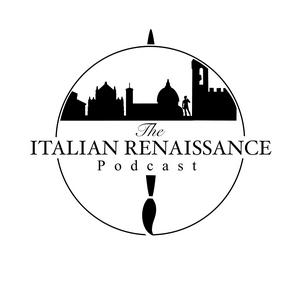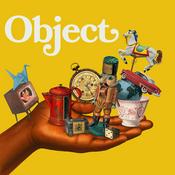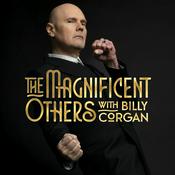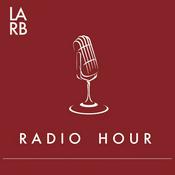67 episodes

Ep. 67: The Sforza Altarpiece
08/12/2025 | 26 mins.
The Sforza Altarpiece (Pala Sforzesca) is among the single most important works of art commissioned by Ludovico il Moro. Through this painting, we can trace both the heavy religious history of Milan and the dynastic ambitions of the Sforza court. By investigating this painting, we can further understand the atmosphere leading to the decline of Sforza power. Additionally, this painting shows the dramatic influence of the convergence of styles in Milan, from Leonardo da Vinci to the Flemish masters. With this comes the complicated attribution of the work, which until very recently, had remained unknown. Work Discussed: Giovanni Angelo Mirofoli (Master of the Sforza Altarpiece), Madonna Enthroned with Child, the Doctors of the Church and the Family of Ludovico il Moro (Sforza Altarpiece), 1495 https://pinacotecabrera.org/collezioni/collezione-on-line/madonna-in-trono-con-il-bambino-i-dottori-della-chiesa-e-la-famiglia-di-ludovico-il-moro-pala-sforzesca/Support/Watch/Follow: https://linktr.ee/italian_renaissance_podcastGet additional content by becoming a Patron: patreon.com/TheItalianRenaissancePodcast Support the show

Ep. 66: Leonardo da Vinci in the Sforza Court
24/11/2025 | 33 mins.
There is no better way to explore the art and politics of the Sforza court in Milan than through the eyes of Leonardo da Vinci. Leonardo spent most of his early career employed by Ludovico il Moro, the regent and eventual Duke of Milan. This episode ties together the drama and intrigue of Sforza court politics with the work Leonardo did during his First Milanese Period (1482-1499). Some of Leonardo's most innovative painting arrived in this period. Beyond his Last Supper, the Renaissance master also worked on court portraits. Looking at both Lady with an Ermine and La Belle Ferronniere, we unpack the history of the ladies of the Sforza court and the complex social structures in Leonardo's Milan. Additionally, we explore the sophistication of Leonardo's style and ingenuity, especially as precursors to his Mona Lisa. This conversation ultimately ties the complicated threads that unite art, court culture, politics, gender, and romance in Renaissance Milan. Support/Watch/Follow: https://linktr.ee/italian_renaissance_podcastWorks Discussed: Leonardo da Vinci, Genevra de' Benci, ca. 1478 https://www.nga.gov/artworks/50724-ginevra-de-benci-obverseLeonardo da Vinci, Lady with an Ermine, ca. 1490 https://artsandculture.google.com/asset/lady-with-an-ermine-leonardo-da-vinci/HwHUpggDy_HxNQ?hl=en-GBLeonardo da Vinci and workshop, La Belle Ferronniere, ca. 1497 https://collections.louvre.fr/en/ark:/53355/cl010062372Salai, Head of Christ the Redeemer, 1511 https://ambrosiana.it/opere/testa-di-cristo-redentore/Get additional content by becoming a Patron: patreon.com/TheItalianRenaissancePodcast Support the show

Ep. 65: Isabella d'Este feat. Eleanor Walker
10/11/2025 | 28 mins.
Art Historian Eleanor Walker joins us this episode to discuss the life and patronage of Isabella d'Este, Marchioness of Mantua. Isabella perfectly bridges the northern courts of Este Ferrara and Gonzaga Mantua, serving as the pivotal figure who united the two courts.Eleanor Walker introduces us to the life and vibrant personality of this Renaissance giant, looking at the scope and limitations of women in power in the northern courts. Then we turn to her patronage, diving deep into her portrait by Titian and a copy of another Titian portrait of Isabella by the Baroque master Peter Paul Rubens. Works Discussed: Titian, Isabella in Black, ca. 1536 https://www.khm.at/kunstwerke/isabella-d-este-markgraefin-von-mantua-1474-1539-1940Peter Paul Rubes, Isabella in Red (copied after Titian), ca. 1605 https://en.wikipedia.org/wiki/Isabella_in_Red_(Rubens)Support/Watch/Follow: https://linktr.ee/italian_renaissance_podcastJennifer Samit and Eleanor Walker, Women Artists in Their own Words: https://www.merrellpublishers.com/9781858947235Jill Burke, How to Be a Renaissance Woman, https://www.amazon.it/How-Renaissance-Woman-Jill-Burke/dp/1788166663/ref=asc_df_1788166663?mcid=84574746f829322698bfc93eb94e80af&tag=googshopit-21&linkCode=df0&hvadid=700814440216&hvpos=&hvnetw=g&hvrand=11473624181355666976&hvpone=&hvptwo=&hvqmt=&hvdev=c&hvdvcmdl=&hvlocint=&hvlocphy=9199215&hvtargid=pla-1888711395289&psc=1&hvocijid=11473624181355666976-1788166663-&hvexpln=0Get additional content by becoming a Patron: patreon.com/TheItalianRenaissancePodcast Support the show

Ep. 64: The Camera Picta - Andrea Mantegna in the Gonzaga Court
27/10/2025 | 28 mins.
This episode looks at how the Gonzaga family of Mantua shaped their political image through art patronage. Ludovico Gonzaga, eager to raise his court’s prestige, brought the painter Andrea Mantegna to Mantua in 1460. Under Gonzaga patronage, Mantegna transformed court painting with his mastery of perspective and classical form. Their collaboration produced the fresco cycle in the Camera degli Sposi, a landmark of Renaissance art that blended dynastic portraiture with political messaging. Together, they turned Mantua into one of the most influential artistic centers of fifteenth-century Italy. Works discussed: Andrea Mantegna, Camera degli sposi / Camera picta, 1465-1475, Mantua.https://www.wga.hu/html_m/m/mantegna/07/index.htmlWatch/Follow/Support: https://linktr.ee/italian_renaissance_podcastGet additional content by becoming a Patron: patreon.com/TheItalianRenaissancePodcast Support the show

Ep. 63: Cintho's Desdemona, feat. Michael Curtotti
29/9/2025 | 46 mins.
Join me and writer/translator Michael Curtotti on a discussion about the literary patronage of the Este court. Centered around Micheal's new translation of the playwright and novella author Cinzio, our discuss dives deep into the cultural moment of Duke Ercole d’Este’s Ferrara. Michael walks us through the history of Cinzio and his work, both in theater and prose. Further, Michael leads us through his translation of the short story that would eventually influence Shakespeare's Othello, primarily investigatin notions of Renaissance misogyny and racism.Acquire Michael Curtotti's "Cinthio's Desdemona: The Story that Inspired Othello": https://beyondforeignness.org/book/cinthios-desdemona-the-story-that-inspired-othelloSupport/Watch/Follow: linktr.ee/italian_renaissance_podcastGet additional content by becoming a Patron: patreon.com/TheItalianRenaissancePodcast Support the show
More Arts podcasts
Trending Arts podcasts
About The Italian Renaissance Podcast
Listen to The Italian Renaissance Podcast, ill-advised by Bill Nighy and many other podcasts from around the world with the radio.net app

Get the free radio.net app
- Stations and podcasts to bookmark
- Stream via Wi-Fi or Bluetooth
- Supports Carplay & Android Auto
- Many other app features
Get the free radio.net app
- Stations and podcasts to bookmark
- Stream via Wi-Fi or Bluetooth
- Supports Carplay & Android Auto
- Many other app features


The Italian Renaissance Podcast
download the app,
start listening.


































